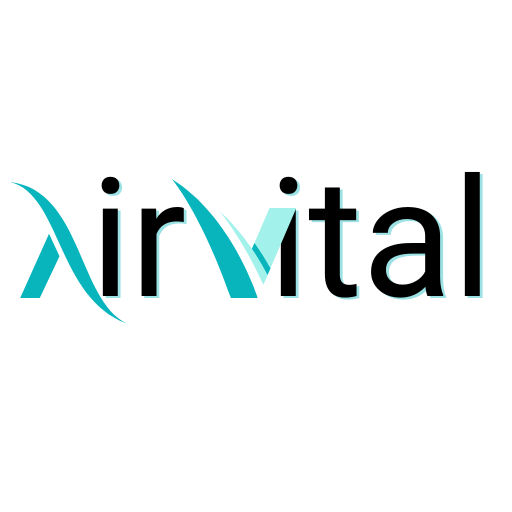
Deviated nasal septum: consequences, solutions and improvement of breathing
Deviated nasal septum: consequences, solutions and improvement of breathing
A deviated nasal septum, also called a deviated septum, is a deformation of the cartilage and bone separating the two nostrils. This problem, more common than you might think, can cause a series of consequences that significantly impact quality of life. This deviation, which can be mild or severe, congenital or acquired (following trauma for example), causes breathing difficulties and a change in daily comfort for many people. In this comprehensive and detailed article, we will explore the fundamental aspects of a deviated nasal septum: its causes, its specific consequences on health and well-being, as well as the different solutions available to improve breathing and regain optimal respiratory comfort. We will place particular emphasis on the effectiveness of magnetic nasal strips as a non-invasive solution to significantly relieve symptoms.
Causes and mechanisms of nasal septum deviation
A deviated nasal septum can have several causes. In some cases, it is congenital, that is, present from birth. Embryonic development can cause a malformation of the nasal septum, leading to a deviation. More commonly, the deviation is acquired following nasal trauma. A blow to the nose, even a minor one, can be enough to deform the nasal septum. Contact sports, accidents in everyday life or surgical procedures on the nose can also cause a deviation. Chronic inflammation of the nasal mucosa, as in the case of certain allergies or infections, can also contribute to a deformation of the septum. Uneven bone and cartilage growth during adolescence is another potential cause.
The consequences of a deviated nasal septum: a multidimensional impact on health
The consequences of a deviated nasal septum are varied and their intensity depends on the severity of the deformity. A slight deviation may not cause symptoms, while a significant deviation can cause significant problems. Here is a detailed overview of the possible consequences:
- Breathing difficulties and poor breathing: The deformation of the septum can obstruct the passage of air, making breathing more difficult or even painful, especially through one nostril. This obstruction can be felt as a permanent discomfort, a feeling of suffocation, and noisy breathing. The respiratory effort is increased, which can lead to fatigue and a decrease in physical capacity. Mouth breathing, adopted to compensate, can in turn cause oral and dental problems (dry mouth, cavities, etc.).
- Snoring and sleep disorders: Nasal obstruction promotes snoring, which disrupts the sleep of the person concerned and those around them. In more severe cases, the deviated septum can contribute to sleep apnea, a serious breathing disorder characterized by repeated breathing pauses during the night, with significant consequences on cardiovascular and neurocognitive health.
- Sinusitis and respiratory infections: A deviated septum can disrupt ventilation and drainage of the sinuses, leading to stagnation of secretions and increasing the risk of chronic sinus infections (sinusitis). Infections can recur and become difficult to treat.
- Nasal dryness and nosebleeds: Nasal obstruction can lead to dryness of the nasal mucosa, increasing the sensitivity and fragility of blood vessels, and therefore the risk of irritation and frequent nosebleeds.
- Reduced athletic performance: Breathing difficulties linked to a deviated nasal septum can impact athletic performance, particularly during intense efforts that require good oxygenation.
- Olfactory problems: Deformation of the septum can affect the perception of odors, resulting in a decreased or altered sense of smell.
- Psychological impact: Chronic respiratory disorders can have a significant impact on quality of life and emotional well-being, causing frustration, irritability, and even anxiety.
Solutions to improve breathing and relieve symptoms
Treatment for a deviated nasal septum depends on the severity of the symptoms and the impact on quality of life. It is essential to consult an ENT (ear, nose and throat) specialist for an accurate diagnosis and medical advice tailored to the situation.
If the deviation is mild and asymptomatic, no treatment is usually necessary. However, if bothersome symptoms occur, several treatment options are available:
- Medications: Decongestant nasal sprays or nasal corticosteroids may be prescribed to temporarily relieve nasal obstruction and reduce inflammation. These treatments relieve symptoms but do not correct the deviation itself.
- Surgery: Septoplasty is a surgical procedure that straightens the deviated nasal septum. It is an effective procedure to correct the problem in the long term, but it involves general anesthesia, a recovery period, and associated surgical risks.
- Magnetic Nasal Strips: For a non-invasive approach, Air Vital Magnetic Nasal Strips offer a comfortable and effective solution to improve breathing. They act mechanically by opening the nasal passages, facilitating the passage of air and reducing obstruction. This method is particularly interesting for rapid and non-invasive relief.
Air Vital: a non-invasive solution for better breathing
The Air Vital MAGNETIC NASAL STRIP KIT represents a significant advance in the field of non-invasive solutions for breathing problems related to a deviated nasal septum. Its innovative design and the use of high-quality materials allow for a significant improvement in breathing. Studies have shown an improvement in breathing of up to 80% compared to conventional solutions. The action of the magnets integrated into the design allows the nasal passages to be gently opened and reduces obstruction, allowing easier and quieter breathing. These nasal strips are particularly indicated for:
- Relieve nasal congestion and breathing difficulties
- Reduce snoring and improve sleep quality
- Improve sports performance by facilitating oxygenation
- Alleviate symptoms of mild sleep apnea

For optimal and economical use, consider the 30 Patch Refill . This refill allows continuous use for 15 days, ensuring regular breathing comfort. Daily use of Air Vital nasal strips contributes to a lasting improvement in breathing and well-being.

Before using Air Vital Nasal Strips or any other solution to treat a deviated nasal septum, it is imperative to consult a healthcare professional to obtain an accurate diagnosis and personalized advice. Only a doctor will be able to advise you on the most appropriate treatment for your situation and help you make the best decision for your health. Self-medication should be avoided. The use of Air Vital Nasal Strips should be considered as a complement to medical advice and treatment, and not as a substitute.
Conclusion
A deviated septum is a common problem that can have a significant impact on quality of life. Understanding the different treatment options available, from medical treatments to surgery and non-invasive solutions such as Air Vital Magnetic Nasal Strips , is essential to making an informed choice. A consultation with an ENT specialist is recommended to assess the extent of the deviation, identify symptoms, and determine the best strategy to improve breathing and regain optimal nasal comfort. With an appropriate approach and medical follow-up, it is possible to significantly relieve the symptoms related to a deviated septum and considerably improve one's quality of life.






